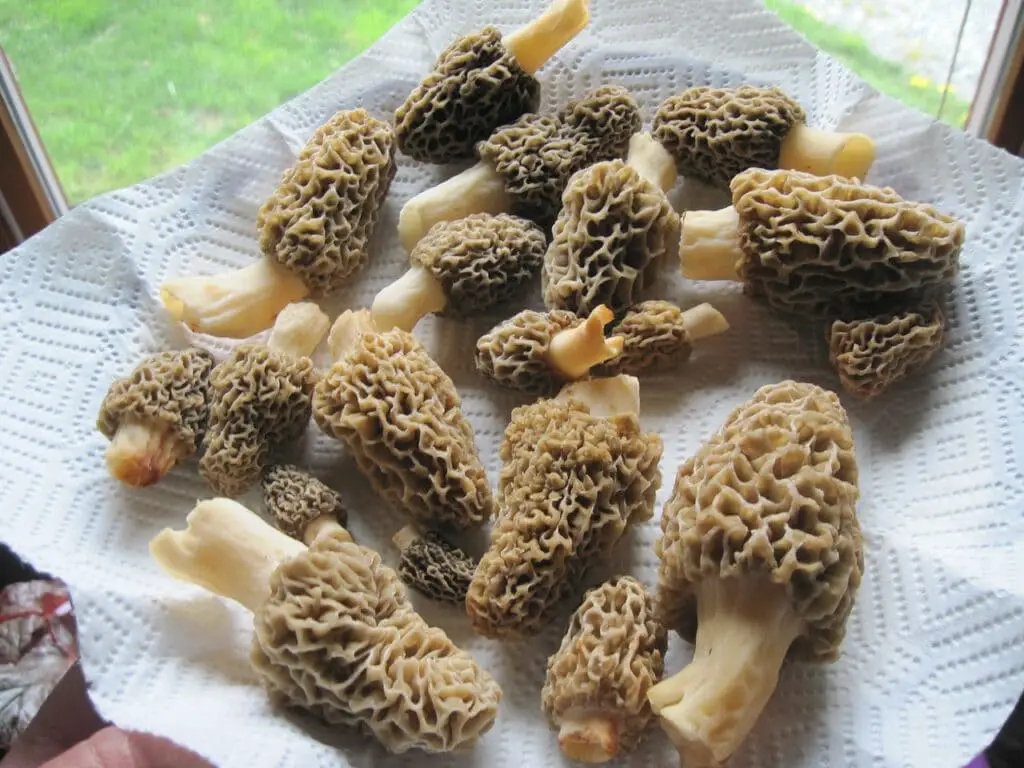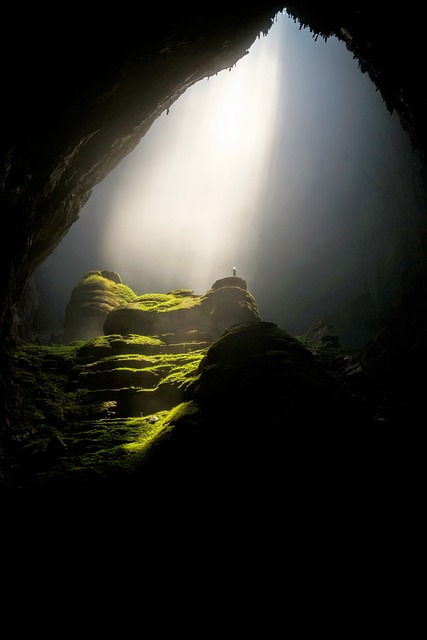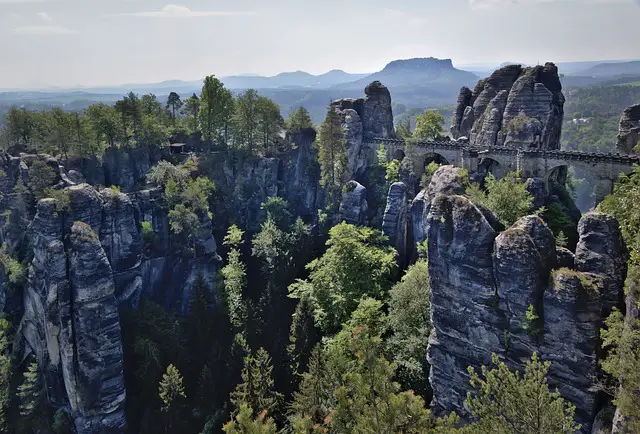Morel mushrooms are one of the most sought after wild edible mushrooms in North America. They grow in many locations where there is an early spring and a reasonable amount of rainfall. Certain areas have more abundant harvests than others depending on climate, soil conditions, etc. They are typically found near elm trees or the edges of forests that contain elm trees. Morels typically begin to appear in early April and can be harvested through the month of May, depending on the weather and location.

Morel mushroom hunting is a popular activity throughout many states of the midwest United States. One of the favorite activities each spring is morel mushroom hunting with family and friends. Many of you are not familiar with these tasty morsels, so this article aim to encourage you to go out and find some morels this spring.
Morel mushrooms are actually really easy to identify. There are only a couple of poisonous mushrooms that look somewhat similar, so if you learn to identify these morels, you can feel confident about eating them.
If you’ve never gone mushroom hunting before, seek out an experienced hunter or club in your area and go with someone who knows what they’re looking for. Otherwise, get on the internet and do some research or perhaps you can join a local club and receive training.
You don’t want to be out in the woods, miles away from your vehicle and not be able to identify a poisonous mushroom. It’s simply not worth the risk.
It is also important that you know exactly where the mushrooms came from before you consume them. Never eat mushrooms you pick in someone’s yard – always ask permission first.
Never eat any mushroom raw. Cooking morel mushrooms is the only safe way to eat them unless you are absolutely sure of their identification or have received training/permission from an experienced hunter/club.
Boil them for about 5 minutes to kill off any bacteria that may be present. You can also bake, saute or fry them – but don’t eat raw mushrooms!
The most important thing to remember is that morel mushroom hunting is a blast and there’s nothing like finding your own food in the great outdoors. So get out there this spring and start looking.
You will be amazed at how many morels you can find if you know where to look.
Make sure you have a good supply of toothpicks and paper bags – the mushrooms are often too hot to carry in your bare hands. You’ll also want a pocket knife, as it is very easy to tear through the stem when pulling them out of the ground.
You can typically find morel mushrooms in sunny areas with well-drained soil, especially near elm trees or other hardwoods. They can be found on hillsides and steep forested ravines as well as flat valley floors.
The real trick to finding them is to look at likely looking spots and keep your eyes open for small, funnel-shaped mushrooms poking through the leaf litter. They are most often found in areas that have recently burned or experienced some type of disturbance to the ground.
Morel mushrooms are one of the best tasting wild edibles you can find so get out there this spring and start looking! [Article Ends]
Table of Contents
Is it true that morel mushroom hunting is a popular activity throughout many states of the midwest United States?
Yes, it is true. Morel mushrooms are actually really easy to identify. They typically begin to appear in early April and can be harvested through the month of May, depending on the weather and location. One of the most important things to remember is that morel mushroom hunting is a blast and there’s nothing like finding your own food in the great outdoors. So get out there this spring and start looking. You will be amazed at how many morels you can find if you know where to look.
Where can you find morels mushroom generally?
Morels typically grow in sunny areas with well-drained soil, especially near elm trees or other hardwoods. They can be found on hillsides and steep forested ravines as well as flat valley floors. The real trick to finding them is to look at likely looking spots and keep your eyes open for small, funnel-shaped mushrooms poking through the leaf litter. They are most often found in areas that have recently burned or experienced some type of disturbance to the ground.
Are there any poisonous mushrooms that look somewhat similar to morels mushroom?
There are only a couple of poisonous mushrooms that look somewhat similar, so if you learn to identify these morels, you can feel confident about eating them. It is also important that you know exactly where the mushrooms came from before you consume them. Never eat mushrooms you pick in someone’s yard – always ask permission first.
Never eat any mushroom raw. Cooking morel mushrooms is the only safe way to eat them unless you are absolutely sure of their identification or have received training/permission from an experienced hunter/club. Boil them for about 5 minutes to kill off any bacteria that may be present. You can also bake, saute or fry them – but don’t eat raw mushrooms!
If you’re not 100% sure what type of mushroom you’ve found (and it’s not a morel), go ahead and boil it for a while and then taste it. If it tastes good, you can eat it. If not, chuck that sucker in the compost bin immediately.
During morel mushroom season, pick only as many mushrooms as you think you’ll be able to process before they go bad. Don’t leave them out of refrigeration for longer than necessary. Place cooked mushrooms in the fridge to prevent them from spoiling quickly.
Cooked morels can be frozen easily, so no worries if you happen to find too many of these tasty little morsels during your hunts!
What must one do to identify morels mushroom if they are not experienced in such matters?
The first thing one can do is look up pictures on line and compare them to what you’ve found. If it’s not a morel, then move along! Also remember that poisonous mushrooms typically don’t taste good. There are only a couple of poisonous mushrooms that look somewhat similar to morels, so if you learn to identify these morels, you can feel confident about eating them.
There are also experienced mushroom hunters who will be happy to show you what they look like. The best way to learn is just ask someone who has been hunting for years or join a local mushroom club, being sure to start with an experienced hunter when in doubt!
Are there any states in the US where morel mushroom hunting is prohibited?
Yes, some states have restrictions on the time of year and the amount you can pick during a given time period. Other states allow it but require hunters to obtain a permit for a small fee. Be sure to check your state’s requirements before going out into the woods with a basket or bucket!
How do you prepare morel mushrooms for cooking?
Mushrooms should be cooked as soon as possible after harvesting. If this isn’t possible, place them in a paper bag and keep moist – not wet! Do not wash until ready to eat, as the water speeds spoilage. To clean them , brush off any dirt with a dry pastry brush or paper towel. Slice in half lengthwise and rinse with a lightly dampened cloth or paper towel if dirty. Be sure to remove the hollow stem when preparing morel mushrooms – it is actually attached to the inside of the cap!



